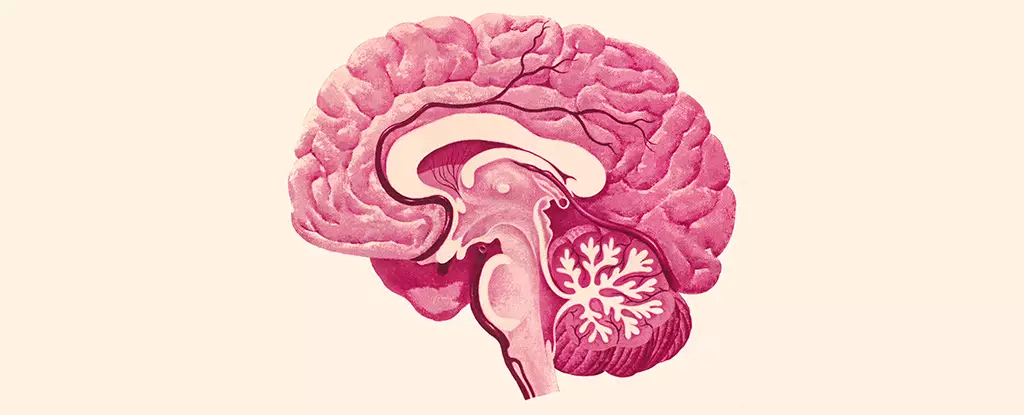The herpes simplex virus type 1 (HSV-1) has long been recognized as the primary cause of cold sores. However, recent studies have broadened our understanding of this common virus, revealing its potential to penetrate the central nervous system (CNS) and fundamentally impact brain health. A collaborative study conducted by researchers from the University of Colorado and the University of Bourgogne has illuminated the pathways through which HSV-1 invades the brain, highlighting regions of vulnerability and raising pertinent questions regarding its role in neurodegenerative disorders, including Alzheimer’s disease.
Understanding how HSV-1 infiltrates the brain is pivotal. The virus can enter via two specific nerves: the trigeminal nerve, which serves facial sensations, and the olfactory nerve, responsible for our sense of smell. While these routes have been established, the mechanisms governing the subsequent spread of the virus within the brain remain largely enigmatic. Neurologist Christy Niemeyer emphasizes the importance of mapping this trajectory: “Identifying how HSV-1 can get into the brain and what brain regions are vulnerable is key in understanding how it initiates disease.” With this understanding, researchers are better positioned to examine the long-term implications of HSV-1 on neurodegenerative diseases.
Mapping the Impact: A Focus on Critical Brain Regions
The research team’s investigation focused on key brain areas affected by HSV-1 infection. They discovered that the virus predominantly targets critical regions such as the brain stem and the hypothalamus. The brain stem is integral for regulating vital functions like heart rate and breathing, while the hypothalamus plays a significant role in emotional and hormonal balance. Alarmingly, the presence of HSV-1 in these regions could disrupt their functions, potentially leading to chronic health issues.
Interestingly, the study noted that certain areas, including the hippocampus—which is pivotal for memory formation—and the cortex—associated with higher cognitive functions—remained unscathed by HSV-1 antigens. This observation raises intriguing questions about the virus’s selective impact on specific brain regions and its potential role in conditions such as Alzheimer’s disease.
The Role of Microglia: Guardians or Adversaries?
An essential part of this study was the examination of microglia, the brain’s resident immune cells. The researchers observed that these cells become activated during HSV-1 infections, leading to localized inflammation. Strikingly, even after the virus was no longer detectable, inflammation persisted in certain brain regions, indicating prolonged microglial activity. Niemeyer warns that this persistent inflammation can give rise to chronic conditions, a known precursor to various neurological disorders.
While the study did not result in instances of encephalitis—a severe and potentially fatal inflammation of the brain caused by HSV-1—its findings suggest that the ongoing activity of microglia could still result in functional impairment of affected brain regions. The implications are profound: even in the absence of full-blown disease, HSV-1 can exert significant influence over brain health.
The potential connection between HSV-1 and neurodegenerative diseases like Alzheimer’s is increasingly supported by emerging research. As noted in the study, chronic inflammation linked to HSV-1 may disrupt neural function, possibly contributing to the onset or acceleration of neurodegenerative diseases. Researchers are especially focused on overlapping brain regions impacted by both HSV-1 and Alzheimer’s, seeking to establish a clearer relationship between viral infections and neurological disorders.
Niemeyer notes, “Persistently inflamed cells can lead to chronic inflammation, a known trigger for a number of neurological and neurodegenerative diseases.” The connection between inflammation triggered by HSV-1 and neurodegenerative processes warrants further exploration, as it could pave the way for innovative therapeutic approaches.
As we deepen our understanding of HSV-1’s impact on the brain, it becomes increasingly clear that this virus is not merely a nuisance but a potential player in more serious health issues, including neurodegenerative diseases. This study serves as a crucial step in comprehending the pathways of viral entry and the localized effects on brain functionality. Continued research in this area may not only clarify the relationship between HSV-1 and neurodegenerative diseases but also guide the development of targeted interventions to mitigate its effects on brain health.


Leave a Reply